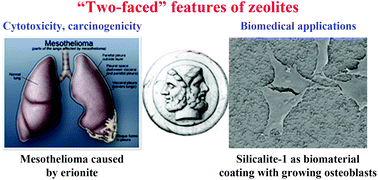Applications of zeolites in biotechnology and medicine – a review
Abstract
Zeolites are microporous tectosilicates of natural or synthetic origin, which have been extensively used in various technological applications, e.g. as catalysts and as molecular sieves, for separating and sorting various molecules, for water and air purification, including removal of radioactive contaminants, for harvesting waste heat and solar heat energy, for adsorption refrigeration, as detergents, etc. These applications of zeolites were typically related with their porous character, their high adsorption capacity, and their ion exchange properties. This review is focused on potential or already practically implemented applications of zeolites in biotechnology and medicine. Zeolites are promising for environment protection, detoxication of animal and human organisms, improvement of the nutrition status and immunity of farm animals, separation of various biomolecules and cells, construction of biosensors and detection of biomarkers of various diseases, controlled drug and gene delivery, radical scavenging, and particularly tissue engineering and biomaterial coating. As components of scaffolds for bone tissue engineering, zeolites can deliver oxygen to cells, can stimulate osteogenic cell differentiation, and can inhibit bone resorption. Zeolites can also act as oxygen reservoirs, and can improve cell performance in vascular and skin tissue engineering and wound healing. When deposited on metallic materials for bone implantation, zeolite films showed anticorrosion effects, and improved the osseointegration of these implants. In our studies, silicalite-1 films deposited on silicon or stainless steel substrates improved the adhesion, growth, viability and osteogenic differentiation of human osteoblast-like Saos-2 cells. Zeolites have been clinically used as components of haemostatics, e.g. in the Advanced Clotting Sponge, as gastroprotective drugs, e.g. Absorbatox® 2.4D, or as antioxidative agents (Klinobind®). Some zeolites are highly cytotoxic and carcinogenic, e.g. erionite. However, in other zeolites, the antiproliferative and pro-apoptotic effects can be used for tumor therapy.



 Please wait while we load your content...
Please wait while we load your content...